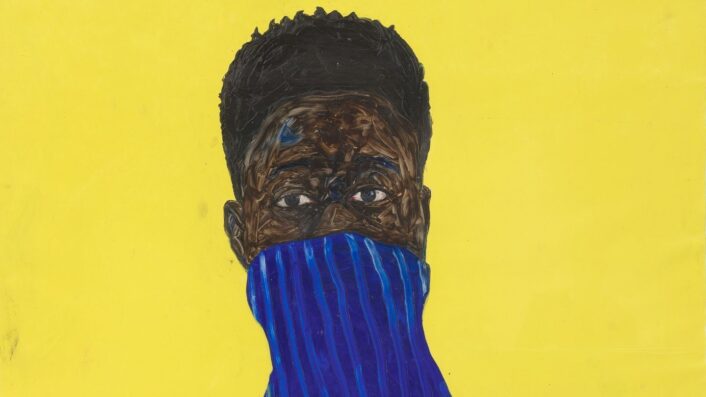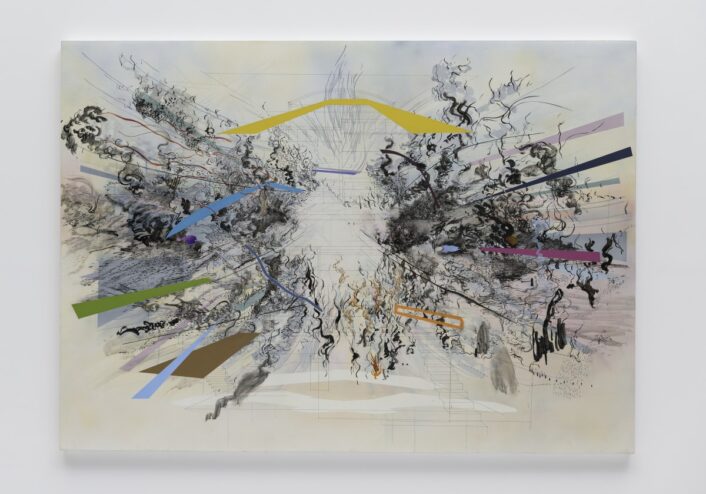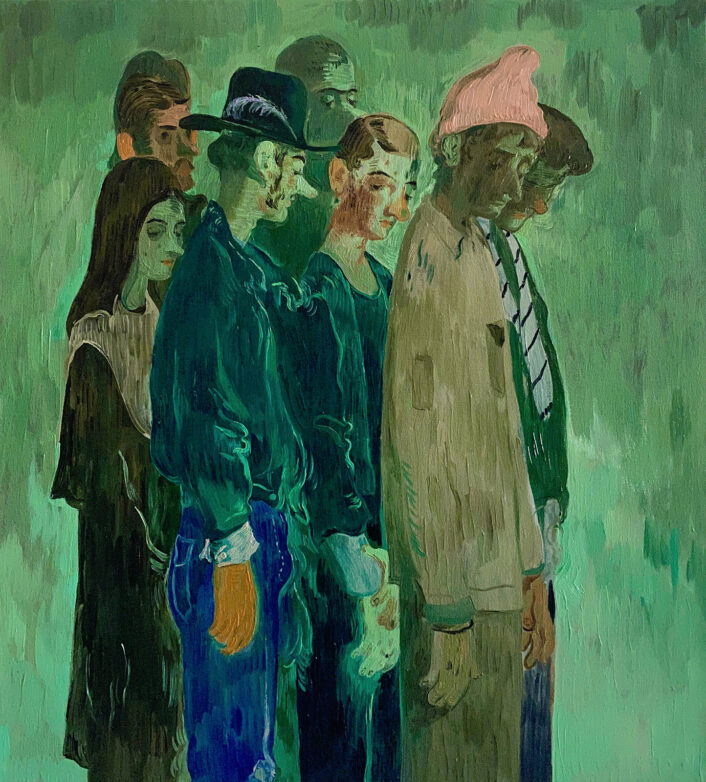Fine Art
Tesfaye Urgessa
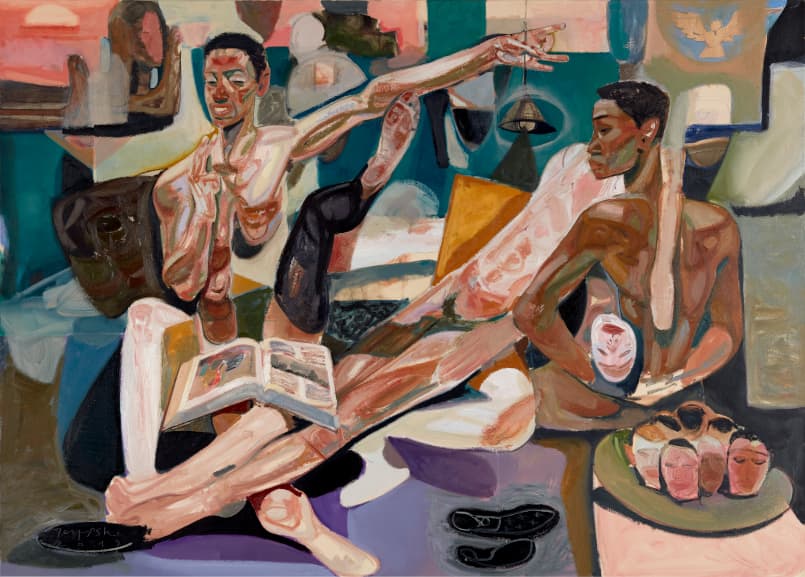
Part of a Saatchi Yates exhibition in London, “From light to sight,” 2019. Oil on canvas.
Image courtesy of: Widewalls
Tesfaye Urgessa is a Ethiopian-born, Germany-based artist who combines his specific Abstract approach to his painting… this method culminates in his own visual language. The artist graduated from the Alle School of Fine Arts and Design in 2006; since then, he has been taking the art world by storm.
Urgessa portrays both the “light and dark sides” of our existence as (courtesy of an interview with Di Chidozie Obasi for Vogue), “the unspoken complexities of politics and identity.” Each piece is vivid and vibrant, and his subjects have representations of race. He says (courtesy of Surface Magazine), “If one recognizes himself or herself in my figures as I recognize myself in them, they will definitely recognize themselves in me.”
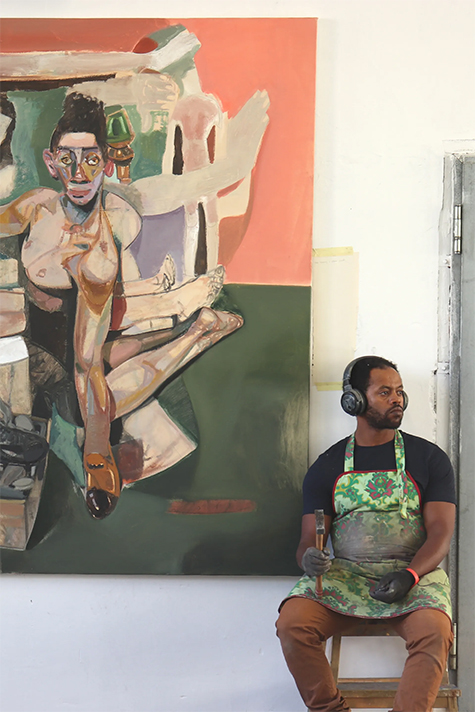
The artist in front of one of his paintings.
Image courtesy of: Vogue Italy
Urgessa takes world affairs to heart; a perfect example of that is his “No Country For Young Men” series. This amazing amalgamation of art was created when the artist (in 2016) heard that 56 million people were migrating and looking for a new place to live. Astoundingly, 80% of this figure were young men and this touched a special nerve for Urgessa. The artist and his wife had been working in temporary camps for immigrants; immigrants themselves, they felt a very personal connection to this troubling issue. He says that since fully comprehending that statistic, images in various stages of fragmentation have filled his dreams.
Soon enough, Urgessa started to paint images from his dreams. To this point, he says (courtesy of Widewalls), “I believe there is a huge difference between painting about a situation and when a situation initiates and affects my paintings. I prefer the latter because the process feels very natural and comes with a lot of surprises. That is exactly the case with the ‘No Country For Young Men’ series. In the beginning, I had these very fragmented images flowing through my head whilst in bed almost every night. I was seeing many bare feet moving in some kind of rhythm, like a marching orchestra, and one day I decided to paint them at the bottom of three canvases, without knowing where the painting was going. After that, I start to see the hands and the shoulders and the heads.”
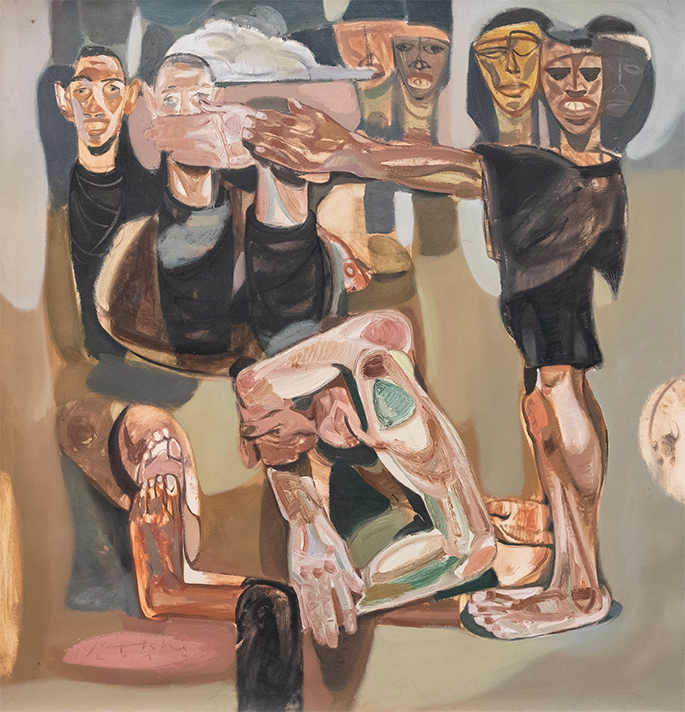
“Chasing After the Wind I,” 2020. This painting was part of South South Veza, a sales platform that is part-auction, part-online fair.
Image courtesy of: ArtNet
For Urgessa, in addition to Ethiopian iconology, he is also influenced by German Neo-Expressionism works from the 1980’s. Those German works are ones he was exposed to while living in Ethiopia; however seeing the paintings in-person was vastly different than the reproductions. It is especially Lucian Freud who most inspired the artist; Urgessa loves the attention to detail and the intensity of Freud’s figures. Exposure to both Expressionists and Neo-Expressionists allowed Urgessa to give himself some flexibility… in other words, he felt that it was possible not to feel completely tied to anything but the painting.
Urgessa believes that his upbringing is also why he paints how he does. He attended the only fine-arts school in Ethiopia; interestingly, most of his professors traveled to Russia in the 1970s and 1980s to learn about painting and drawing. During that time, the major art movement was Socialist Realism; as such, the artists excelled in drawing and knew how to represent anatomy. Having access to the internet also enabled Urgessa and his fellow counterparts to research what was happening in Europe. Furthermore, this enabled him to study Picasso, Francis Bacon, and other similar-minded artists.
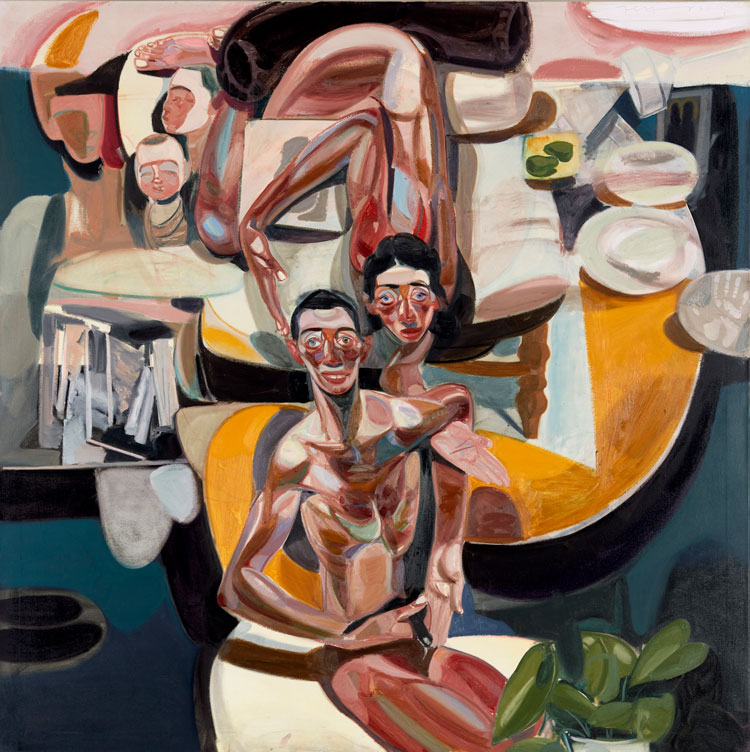
“Sleeping baby bird 2,” 2021. Oil on canvas.
Image courtesy of: Studio International
Urgessa’s summer show at Saatchi Yates in London was a wonderful follow-up to his exhibition at Florence’s Uffizi Galleries. Last summer’s “No Country for Young Men” was a collection of thirty canvases full of thin, yet sturdy figures.
One theme that remains constant is family which he calls the “pillar of society.” He says, (courtesy of an interview with Emily Spicer for Studio International), “When you talk about society, you’re at the same time talking about family.” The artist uses square canvases that he fills with flesh-toned, contorted bodies that are twisted into various positions of movement and full of intense emotions, usually, grief.
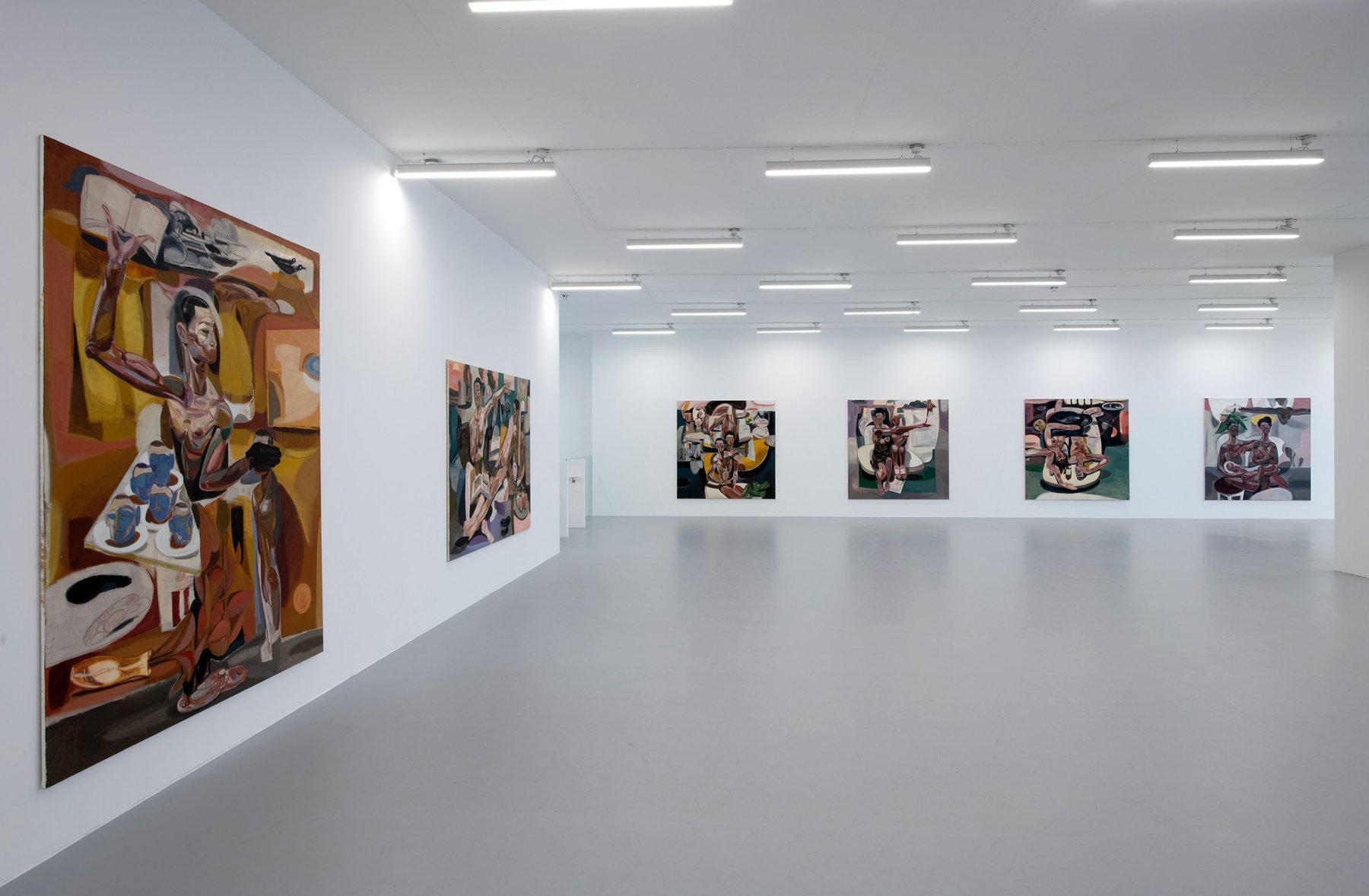
Urgessa’s summer exhibition at Saatchi Yates in London.
Image courtesy of: Galleries Now
The young artist works on a few paintings at a time… he likes to live with them in his studio for a while before completion, often deleting elements and adding new ones. However what is unique is that he leaves traces of each phase… kind of like a little detective game.
Urgessa tries to translate an “immigrant experience” into his work. He says that even if you are accepted into a country as an immigrant, you don’t necessarily have a home. His criteria for having a home means being treated in the same way as everyone else, being an equal part of society. Sadly, for some people, this never happens. We hope that his figures are well on their way to finding their home.
